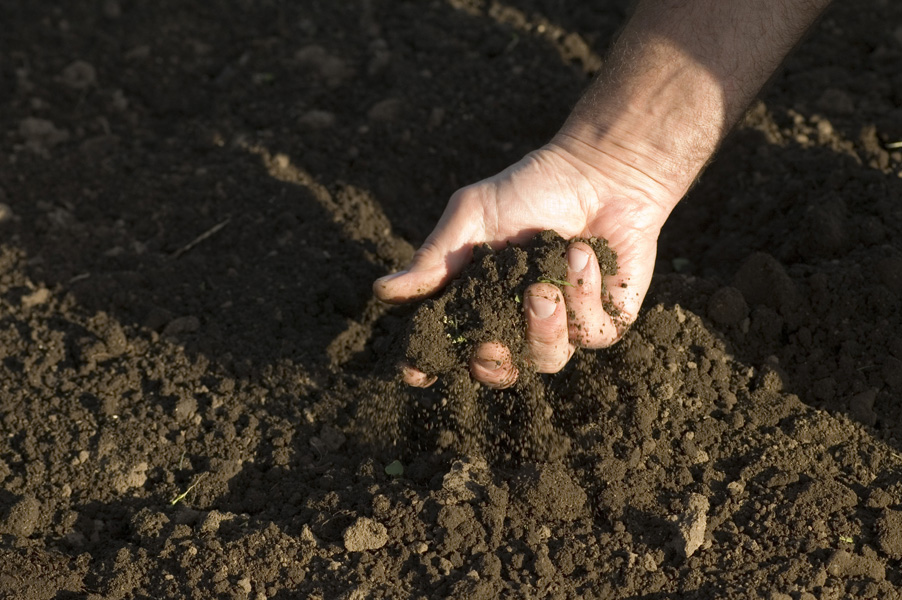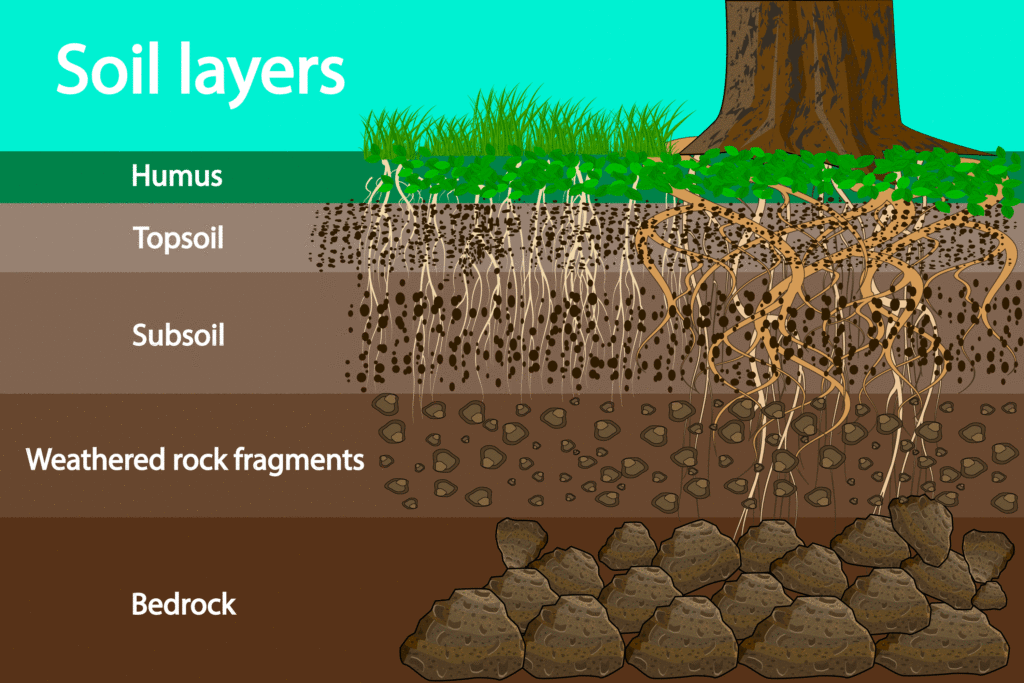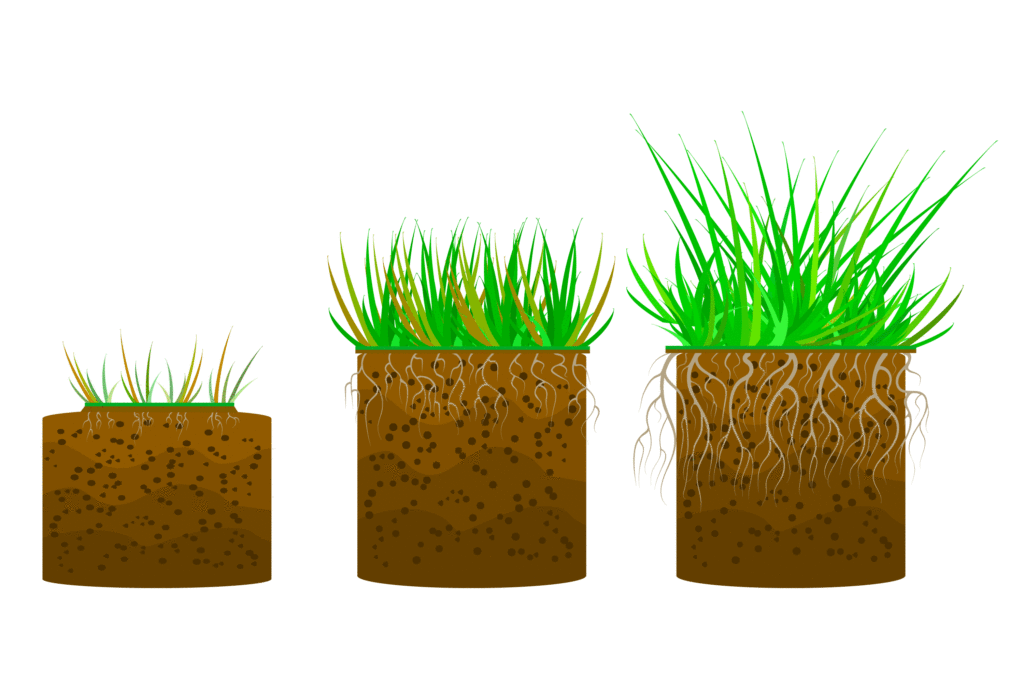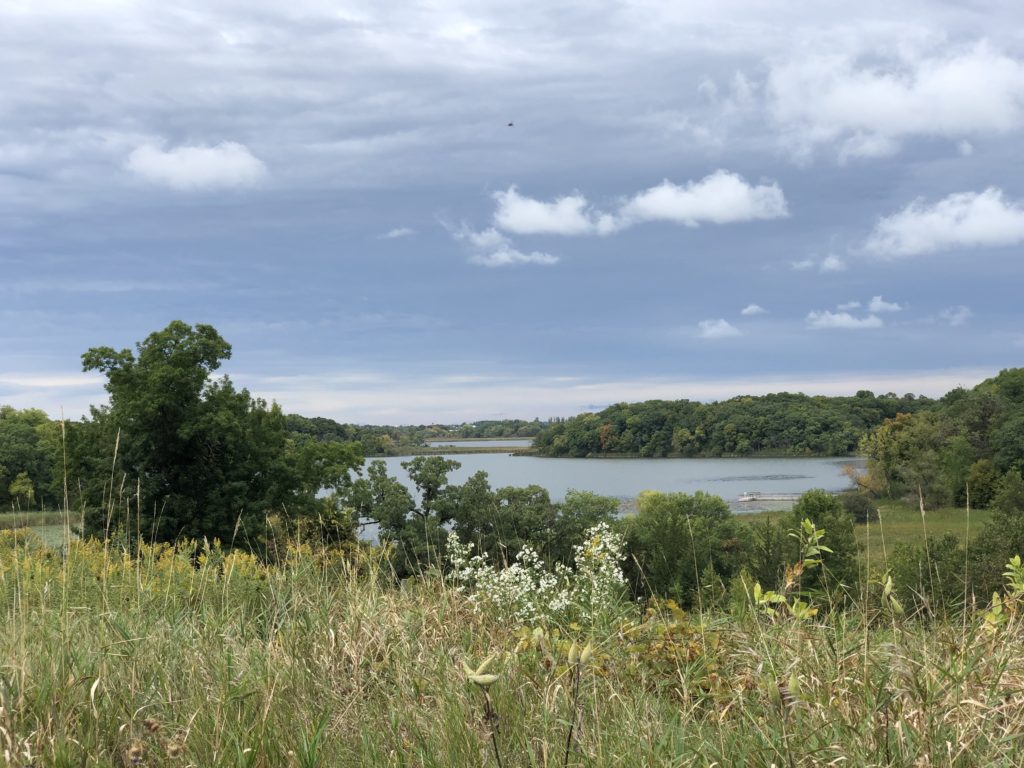Healthy Soil In 5 Easy Steps

Healthy soil is an important part of our planet’s health and happiness. For such a vital pillar of environmentalism, it often doesn’t get as much attention as other important issues like reducing waste and fuel emissions. Yet, without healthy soil we can’t grow organic produce or raise healthy animals. Without healthy soil our beautiful green spaces wither and die. Healthy soil even stores excess carbon, making it a buffer against climate change!
There are many things you can do to support healthy soil like buying food from farms and ranches that practice regenerative agriculture. At Lakewinds, we work hard to source local food grown and raised regeneratively. You can also support soil health at home by building it in your own backyard!
What is healthy soil?
The short answer is that healthy soil is living. It’s alive with beneficial microorganisms that have needs just like your plants. Here’s a quick breakdown of the layers of healthy soil.
- Organic Matter (OM) – OM, also known as humus, is dead and decaying plant and animal matter. In nature, OM is replenished when plants and critters die. It’s a valuable source of precious nutrients such as nitrogen and phosphorous. However, it must be broken down before those nutrients can start to benefit soil and plants.
- Topsoil – Topsoil is where the microorganisms that break down OM live. These creatures are delicate, and die when exposed to extreme heat, cold, draught, or saturation. They also require oxygen. Luckily, roots and the fungal systems that grow around roots are great aerators. Topsoil can be as thin as a dime or several feet thick. The more you care for topsoil, the more you’ll have. When properly cared for, it will replenish and support itself.
- Subsoil – Subsoil is usually not great for growing plants. It’s too deep, and often too rocky or sandy, for nutrients, carbon, and water to properly disperse. When topsoil isn’t properly tended, subsoil tends to be fairly close to the surface. In healthy yards, gardens, and farms, subsoil is covered with a good foot or more of topsoil.

The important thing to remember is that soil is alive.
If it’s inert, you’ve just got dirt!
What you can do
-
Encourage biodiversity
When planning your garden or backyard, choose a diverse range of native plants, trees, and shrubs.
- Prioritize perennials whenever possible. Perennials require less digging and uprooting, which damages precious topsoil. They also stick around for years, restoring and replenishing nutrients. Annuals suck out all the nutrients, then need to be uprooted and thrown away after one season. Plants also store carbon, so the longer they’re alive the more carbon they’re absorbing from the atmosphere and storing in their roots.
- For garden beds, select species that can coexist, with roots, stems, and leaves that complement instead of compete. This is known as companion gardening. The differing root structures will disperse nutrients more evenly. The proximity of the plants will provide more soil coverage. To get started, search the internet for appropriate companion combos native to your climate zone.
- For lawns, allow native grasses to grow naturally and avoid planting imported species. A biodiverse lawn will look a bit more natural than one planted with a single species, but your soil will benefit greatly. Native grasses also require far less care to thrive in your climate, which means less work and resources you have to put into keeping your lawn healthy.
-
Compost and mulch
Compost to add nutrients to your soil.
- Food scraps and organic waste are a treasure trove of nutrients and minerals. Don’t throw them out! Household compost also cuts down on landfill waste, making this an extra eco-friendly step. Many co-ops (including Lakewinds) sell countertop composting bins, or you can purchase one online. If you have a larger yard, you may consider purchasing an outdoor composter, or building your own pile. Regardless of how much you compost, your soil will improve immensely from those food scraps and you’ll be diverting waste from landfills.
- Save dead leaves and twigs from fall raking or spring cleanup for mulching. Though dead, this organic material has a lot to offer your soil if you mulch and spread it over your lawn and garden beds. Many mowers and corded electric blowers include mulching functions.
-
Keep the soil covered
Living topsoil is delicate and needs protection.
- Native grasses are the best protection for lawns and open spaces. If possible, designate areas where you don’t mow or cut the grass. This will encourage deeper root development and provide comfortable habitats for helpful pollinators and birds.

- Soil that isn’t protected by plants or grass should be covered with wood chips or hay. The covering insulates against the cold in the early and late seasons, and against heat during midsummer. It will also help your soil retain precious moisture, meaning less watering work for you. Mulching can also prevent your hard-earned topsoil from erosion caused by intense rain and wind.
-
Skip herbicides, pesticides, fertilizers, and synthetic amendments
They cause more problems than they solve.
- Pesticides kill pests, but they kill pollinators and soil microorganisms as well. What you save in the short-term you’ll pay for when there are no bees pollinating your flowers or microorganisms breaking down nutrients for your plants.
- Herbicides are designed to kill weeds, but often have the side effect of killing biodiversity. This will eventually affect your soil by depriving it of different types of microorganisms.
- Fertilizers, even organic ones, can have a negative effect on soil. They’re so high in nitrogen that they can create chemical imbalances that may be beneficial to some crops — particularly annuals — in the short-term, but ultimately leave soil depleted. Fertilizers also create toxic runoff in drinking wells and waterways.
- Synthetic amendments should be avoided for the same reasons as fertilizers. Choose organic amendments that are heavy on composted material or use your own compost.
- Many of these gardening practices are interrelated. Practicing one creates a need for the other. For example, herbicides kill the microorganisms that replenish soil nutrients. Without them, your soil needs fertilizer to be able to grow anything. Practice proper soil management and you shouldn’t need any of them.
-
Practice no-till and no-dig gardening and lawn care
Let the ecosystem do the work.
- So you’ve followed all the steps. You’ve built some healthy topsoil, covered it with homemade compost, and protected it with organic wood chips. The most important thing to remember now is to let the ecosystem you’ve nurtured do its job without disturbance. Leave it alone whenever and wherever possible. All your hard work building healthy topsoil can be undone by even a small amount of digging.
- When it comes time to plant, don’t dig or till unless absolutely necessary. Remember, perennials don’t need to be replanted every year. Practice rotating plots in vegetable gardens so that you aren’t digging into the soil every season.
- Plant cover crops in a plot you’ve just used and let it go fallow for a season or two. This will allow the topsoil to continue it’s replenishing process. When you’re ready to seed or plant in that plot you won’t need to till or dig down through dead topsoil.
- The more you dig up soil, the quicker it will become dirt!
Don’t feel pressured to try every step. If it’s daunting, try giving one or two of these steps a try this season. Eco-friendly living is more sustainable when we take small steps toward making better choices. Once you start, you may be surprised at how easy it is to keep adding more steps to your green gardening and lawn care practices.
If you’re interested in more ways that your lawn and garden can help rejuvenate the planet, here’s more helpful information on Eco-Friendly Gardening.

